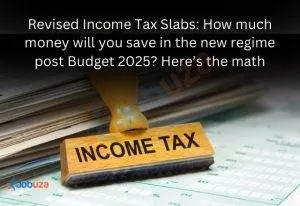In the 2025 Budget, Finance Minister Nirmala Sitharaman introduced significant tax reforms aimed at easing the financial burden on the middle class. Key highlights include a proposal for zero tax on annual income up to ₹12 lakh and reductions in income tax rates under the new tax regime. These changes have been hailed as a much-needed relief for taxpayers, especially those in the middle-income bracket.
Here’s a breakdown of how these revisions impact your tax liabilities:
- Income up to ₹12 lakh: The proposed reforms will exempt individuals earning up to ₹12 lakh from paying income tax, providing substantial relief.
- Reduced Tax Rates: The new tax regime will feature lower tax rates across various income slabs, making it more beneficial for middle-income earners.
This “dream budget” is expected to put more money in the hands of taxpayers, sparking positive reactions across the country.
The proposed income tax rates under the new regime for Budget 2025 are as follows:
- Income up to ₹4 lakh: Nil
- Income between ₹4 lakh and ₹8 lakh: 5%
- Income between ₹8 lakh and ₹12 lakh: 10%
- Income between ₹12 lakh and ₹16 lakh: 15%
- Income between ₹16 lakh and ₹20 lakh: 20%
- Income between ₹20 lakh and ₹24 lakh: 25%
- Income above ₹24 lakh: 30%
Additionally, there are rebates that could reduce or even eliminate tax liabilities for taxpayers:
- Taxpayers earning up to ₹12 lakh will be eligible for a rebate, meaning they won’t owe any taxes due to lower tax slabs and deductions.
- For someone earning ₹12 lakh, the rebate results in a ₹80,000 benefit, covering the entire tax liability under the current system.
- A person with an income of ₹18 lakh will receive a rebate of ₹70,000, reducing 30% of their tax liability.
- For those earning ₹25 lakh, the rebate will amount to ₹1,10,000, covering 25% of their tax dues compared to the existing tax regime.
This new structure aims to make the tax system more beneficial for middle-income earners while still taxing higher-income individuals progressively.
Here’s a more conversational version of the tax relief details:
- Increased Threshold for TDS and TCS: In Budget 2025, Finance Minister Nirmala Sitharaman proposed raising the threshold for Tax Deduction at Source (TDS) on rent from ₹2.4 lakh per year to ₹6 lakh per year. This means the monthly TDS deduction on rent will go up from ₹20,000 to ₹50,000. This change is set to help small taxpayers and reduce the compliance burden on them.
- Relief for Senior Citizens: The Finance Minister also announced a major relief for senior citizens, proposing to double the tax deduction limit on interest income from ₹50,000 to ₹1,00,000. This will benefit those who rely on interest income for their livelihood.
- TCS on Remittances: There’s a change in the Tax Collected at Source (TCS) on remittances under the RBI’s Liberalized Remittance Scheme (LRS). The limit for TCS has been raised from ₹7 lakh to ₹10 lakh. Additionally, the TCS on remittances made for education, when the funds come from a loan taken from a financial institution, has been removed. This will make it easier for students and their families to manage education-related financial matters.
This version is more straightforward and easier to understand while still keeping all the important details intact!
The government’s decision to ease the tax burden is aimed at increasing disposable income, which should encourage more spending and investment from the middle class. This move is part of a larger strategy to boost economic growth and contribute to the nation’s recovery efforts. By freeing up more money for the average taxpayer, the government hopes to stimulate demand and foster a more robust economic environment.







